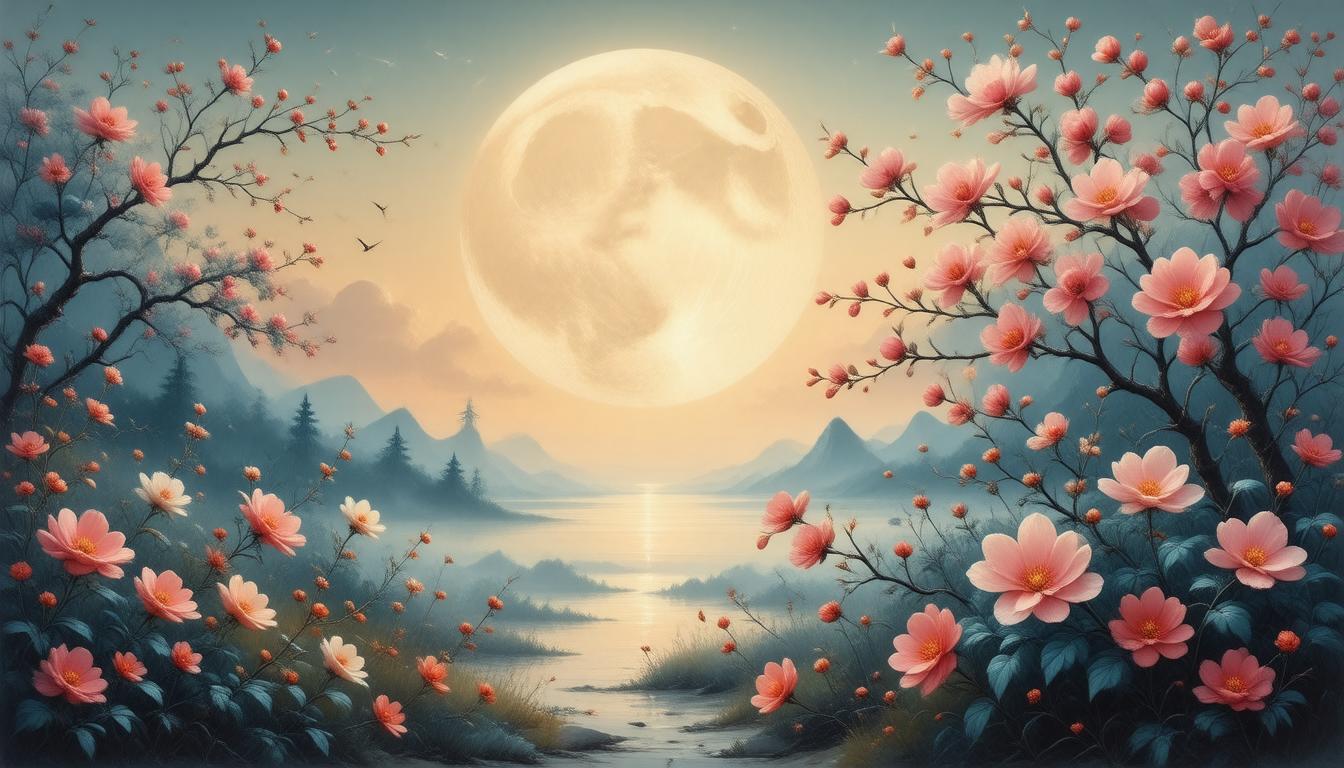🌟 Daily Awakening Quiz 🌟
Each month, as the moon waxes to its fullest form, it evokes a blend of curiosity and contemplation. Among its many monikers, the full moon in May stands out prominently as the "Flower Moon." The origin of this evocative name is deeply rooted in both natural phenomena and cultural traditions, particularly those of Indigenous peoples.
The Significance of the Flower Moon
The term "Flower Moon" is closely tied to the seasonal transformation occurring in May. In North America, this month heralds the bloom of numerous wildflowers, making it a time of vibrant color and renewal in nature. The flowers that burst forth during this time symbolize rebirth and new beginnings, aligning perfectly with the life cycle of plants as they transition from dormancy to flourishing growth.
This lunar name has its origins in the traditions of the Algonquin tribes of northeastern North America. For these communities, the arrival of the Flower Moon was a significant marker in the agricultural calendar, signifying the best period for planting crops as the earth became fertile once more. Jonathan Carver, an early European settler, documented this association in his writings from the late 18th century, further embedding this name into popular culture.
Alternative Names and Their Cultural Roots
While the Flower Moon is the most commonly recognized term, various Indigenous groups and cultures have also attributed their own names to this full moon, each reflecting their unique interactions with the environment.
- Budding Moon: Used by the Cree people to highlight the new growth in plants.
- Planting Moon: Recognized by the Dakota and Lakota tribes, emphasizing agricultural practices during this season.
- Milk Moon: Originating from Anglo-Saxon traditions, this name reflects the time when cows were typically milked more frequently.
- Hare Moon: This colorful moniker connects the May full moon with the breeding cycle of hares, symbolizing fertility in the animal world.
In the context of European traditions, the month of May has also been referred to as the "Mothers’ Moon" in certain parts of the UK, celebrating the nurturing behaviors of animals as they tend to their young.
The Flower Moon and Its Astronomical Characteristics
In 2023, the Flower Moon reached its peak brightness on May 5 at 1:34 p.m. ET, although it was visible to many during the evening hours. This phenomenon evokes a sense of connection among those who observe it, especially knowing it aligns with the seasonal transitions occurring in their surroundings. Viewing the full moon becomes a collective experience, as individuals and communities gather to appreciate not just the celestial body, but also its resonance with nature’s cycles.
In Conclusion
The name "Flower Moon" serves as a beautiful reminder of the intricate relationship between cultural practices and the natural world. As flowers bloom and life re-emerges in May, this full moon invites us to reflect on the interconnectedness of all living things and the generational wisdom passed down through the ages. Whether you are a passionate observer of the night sky or someone who simply enjoys the beauty of spring blossoms, the Flower Moon resonates as a celebration of life and an acknowledgment of the cycles that govern our world.

